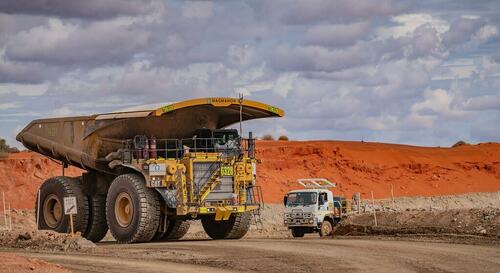
Two Ways Of Thinking About Gold
There are essentially two ways of viewing gold in the current market environment:
- With inflation at 40-year highs, gold should do well.
- With the Fed and other central banks intent on beating inflation, gold should lag.
So far, the second view seems to have won out, with the Sprott Physical Gold Trust (PHYS) (ZeroHedge readers’ favorite gold-tracking ETF) down 5.8% year-to-date, and the more popular SPDR Gold Trust (GLD) down about 5%.
Gold miners, being operationally leveraged to gold, often do better than gold when gold is trending up, and worse when gold is down. Hence, the VanEck Vectors Gold Miners ETF (GDX) was down 18.82% YTD, as of Wednesday’s close.
Dust to DUST
Earlier this week, the Direxion Daily Gold Miners Index Bear 2X Shares (DUST), a leveraged bet against gold miners, appeared in our top ten names, in part due to a new factor we added to our selection process over the summer.
Each day the market’s open, our system gauges stock and options market sentiment to rank securities by its estimate of their potential returns over the next six months. On June 24th, we added a new factor to our security selection process.
The new factor is based on historical data we’ve been tracking which shows that, all else equal, securities that underperformed over the last week and month relative to their historic averages, outperform ones that did well over the most recent week and month. Although DUST is up 11.33% YTD, it’s down more than 14% over the last week and month.
So far, the new factor has gotten us better entries into volatile names, improving performance. We’ll see if it works with DUST too, but here’s a way to protect yourself in case it doesn’t.
In Case We’re Wrong About DUST
In the event we end up being wrong about DUST, here’s a way you can own the ETF while protecting your downside risk. As of Wednesday’s close, this was the optimal collar to hedge 1,000 shares of DUST against a greater-than-22% drop by Wednesday, while not capping your possible upside at less than 40% over the same time frame.


As you can see above, the net cost of this hedge was negative, meaning you would have collected a net credit of $350, or 1.58% of position value, while opening it. That’s assuming, to be conservative, that you bought the puts at the ask and sold the calls at the bid; if you placed both trades within their spreads, you would have collected more than $350.

